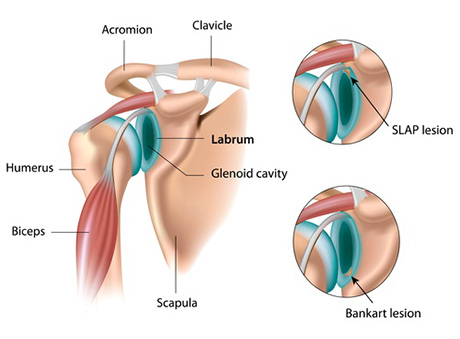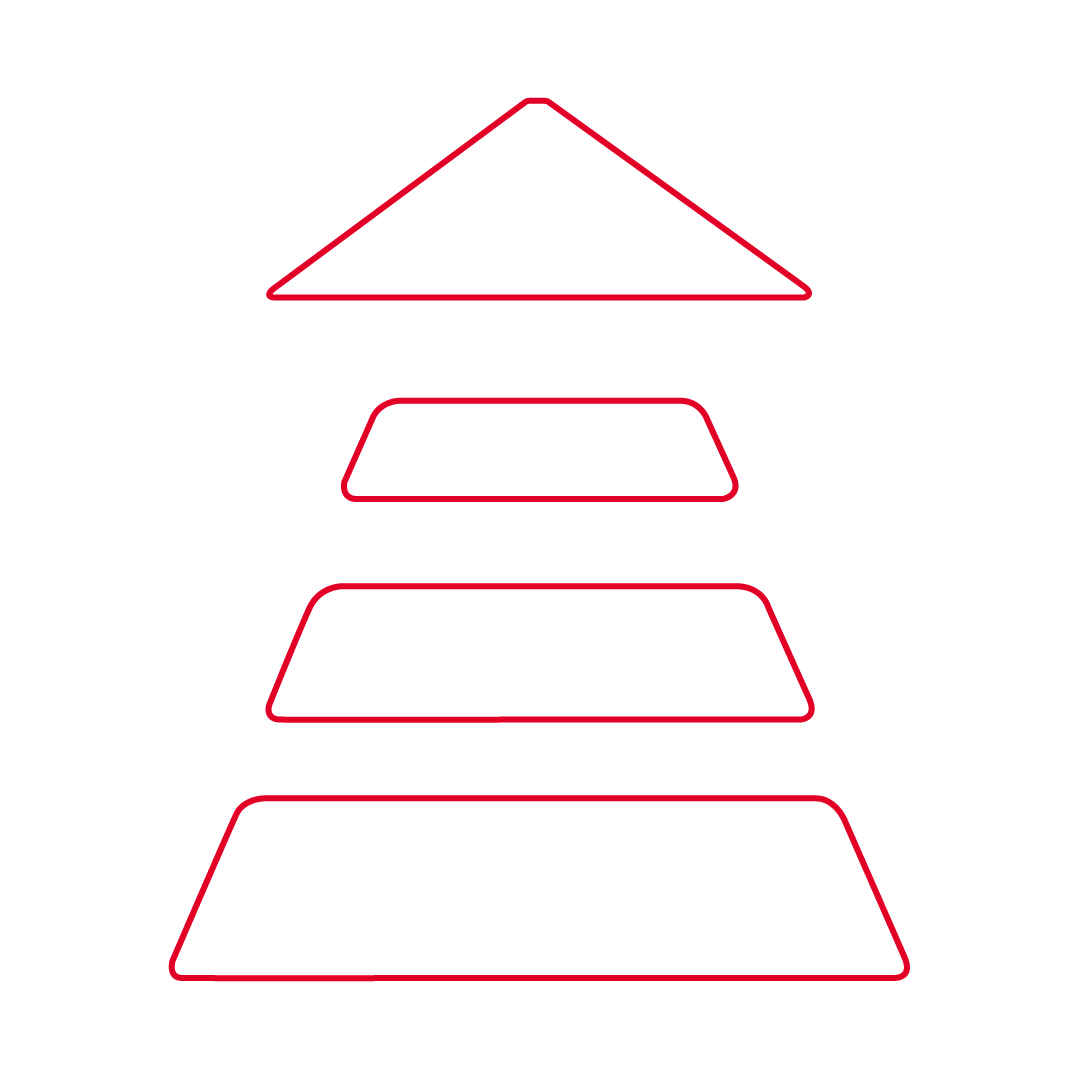Anatomy and Cause of Injury
The labrum is a soft cartilage in the shoulder socket. The labrum cups the head of the humerus with the socket. The mechanism of injury is usually though a fall on an outstretched arm or sudden tug in the arm. 3 common types of labrum tears are SLAP tear, Bankart tear, and Reverse Bankart tear.

SLAP tears are common in overhead sports like baseball, tennis players, or jobs that require a lot of overhead activity. The tear is along the top half of the labrum and is usually related to damage to the bicep tendon as well. A Bankart tear usually is the result of a shoulder dislocation. The tear is along the bottom front part of the labrum. A reverse labrum tear is the result of trauma pushing the head of the humerus backwards. For example, blocking as a football linemen. A reverse labrum tear is less common and account for only 5-10% of labrum tears.
Signs and Symptoms
Symptoms of shoulder labrum tears would include popping, catching, and grinding in your shoulder. You may notice that your shoulder doesn’t feel stable and your range of motion is limited. Weakness in the shoulder and pain at night are also common complaints. Labrum tears usually occur with other shoulder injuries such as a dislocation, rotator cuff tear, and bicep tendon tear.
Assessment
Your physiotherapist will take a detail history of your injury. Explaining how you injured your shoulder will be very helpful. Your physiotherapist will assess your shoulder mobility and perform orthopaedic tests. Your doctor can order a CT or MRI scan which will also be able to evaluate the labrum. An x-ray may also be ordered since a Hill Sachs fracture can be associated with a Banker lesion.

Treatment/ Surgery
Physiotherapy treatment will focus on manual therapy, exercise, and education on what movements to avoid. Your physiotherapist will massage and stretch your shoulder. Gentle exercise would be prescribed initially to regain mobility in the shoulder. Rotator cuff exercises will strengthen and stabilize your shoulder. A physiotherapy program may last 6-8 weeks. n
In more severe cases surgery may be required. Arthroscopic surgery will remove and repair the damaged labrum. After surgery, you will wear a sling for 4 weeks. Physiotherapy after surgery will take 9-12 months. You will be able to return to most daily activities after 3 months. Overhead sports such as tennis or baseball, will require further strength and condition and can begin after 6 months.

